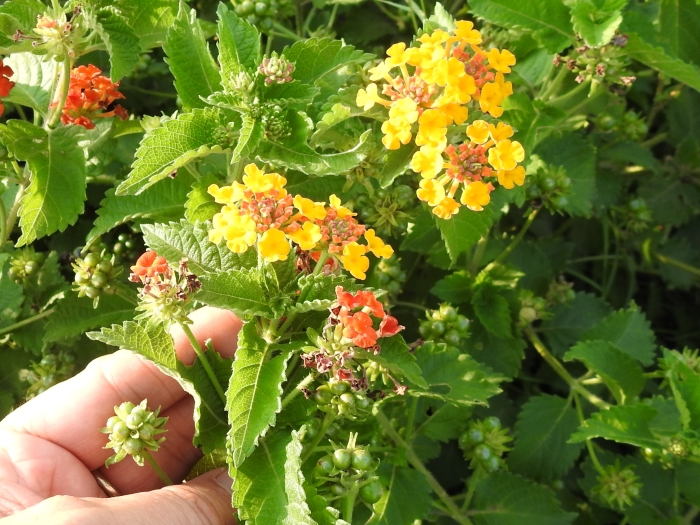Texas Lantana
(Lantana urticoides)
Texas Lantana (Lantana urticoides)
/
/

Sam Kieschnick
CC BY 4.0
Image By:
Sam Kieschnick
Recorded By:
Copyright:
CC BY 4.0
Copyright Notice:
Photo by: Sam Kieschnick | License Type: CC BY 4.0 | License URL: http://creativecommons.org/licenses/by/4.0/ | Rights Holder: Sam Kieschnick | Publisher: iNaturalist | Date Created: 2021-05-09T18:35:12-07:00 |




















































Estimated Native Range
Summary
Lantana urticoides, commonly known as Texas Lantana, is a perennial shrub that typically grows three to five feet tall and wide. It is native to the scrub, open woodlands, and disturbed areas of Texas and Mexico. This species is a member of the Verbenaceae family and is not to be confused with other Lantana species that are sometimes invasive. Texas Lantana has a sprawling form with rough-textured, dark green leaves and clusters of tubular flowers that are orange to red, often with a yellow or orange throat. The flowers are highly attractive to butterflies and bloom prolifically from spring until the first frost, offering a long season of visual interest.
Texas Lantana is valued for its heat and drought tolerance, making it an excellent choice for xeriscaping and low-water gardens. It is also used for border planting, as ground cover, and in butterfly gardens due to its appeal to pollinators. In cultivation, it thrives in full sun and requires well-drained soil. While it can tolerate low to medium amounts of water, overwatering or poor drainage can lead to root rot. Texas Lantana is generally low-maintenance but may benefit from occasional pruning to maintain shape and encourage denser growth. It is resistant to deer browsing, adding to its desirability in areas with high deer populations. However, gardeners should be aware that all parts of the plant are toxic if ingested, and it can cause skin irritation in some individuals.CC BY-SA 4.0
Texas Lantana is valued for its heat and drought tolerance, making it an excellent choice for xeriscaping and low-water gardens. It is also used for border planting, as ground cover, and in butterfly gardens due to its appeal to pollinators. In cultivation, it thrives in full sun and requires well-drained soil. While it can tolerate low to medium amounts of water, overwatering or poor drainage can lead to root rot. Texas Lantana is generally low-maintenance but may benefit from occasional pruning to maintain shape and encourage denser growth. It is resistant to deer browsing, adding to its desirability in areas with high deer populations. However, gardeners should be aware that all parts of the plant are toxic if ingested, and it can cause skin irritation in some individuals.CC BY-SA 4.0
Plant Description
- Plant Type: Shrub
- Height: 2-3 feet
- Width: 4-6 feet
- Growth Rate: Rapid
- Flower Color: Orange, Red, Yellow
- Flowering Season: Spring, Summer
- Leaf Retention: Deciduous
Growth Requirements
- Sun: Full Sun
- Water: Low, Medium
- Drainage: Fast
Common Uses
Bee Garden, Bird Garden, Butterfly Garden, Deer Resistant, Drought Tolerant, Fire Resistant, Fragrant, Groundcover, Hummingbird Garden, Low Maintenance, Showy Flowers, Street Planting
Natural Habitat
Native to the scrub and open woodlands, and disturbed areas of Texas and Mexico
Other Names
Common Names: Western Lantana , Calico Bush , West Indian Shrubverbena
Scientific Names: Lantana urticoides , Lantana urticoides var. hispidula , Lantana hirta f. ternata , Lantana horrida f. bracteosa , Lantana horrida f. latibracteata
GBIF Accepted Name: Lantana urticoides Hayek